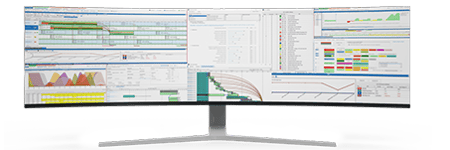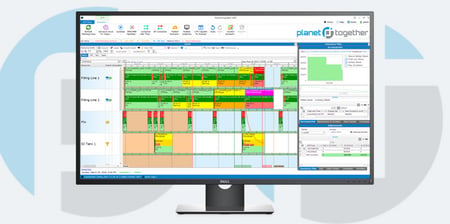Green Procurement: A Game-Changer for Pharmaceutical Supply Chain Management
As the pharmaceutical industry grapples with stringent regulations, competitive pressures, and increasing demand for sustainability, green procurement emerges as a critical area for supply chain managers. Incorporating environmentally responsible practices into procurement not only enhances a company’s environmental footprint but also bolsters its brand reputation and operational efficiency.
For supply chain managers, integrating green procurement strategies with advanced planning and scheduling tools like PlanetTogether, in tandem with enterprise solutions such as SAP, Oracle, Microsoft Dynamics, Kinaxis, or Aveva, offers a transformative opportunity.

Green Procurement in Pharmaceuticals
Green procurement refers to the practice of sourcing goods and services in a way that minimizes environmental impact. In pharmaceutical manufacturing, this involves selecting suppliers based on their adherence to sustainability standards, reducing reliance on non-renewable materials, and implementing processes that lower carbon emissions.
Key components of green procurement include:
Sustainable Supplier Selection: Evaluating suppliers on their environmental certifications and sustainability initiatives.
Lifecycle Thinking: Considering the environmental impact of materials throughout their lifecycle, from sourcing to disposal.
Regulatory Compliance: Ensuring all procurement decisions align with environmental laws and industry standards.
For pharmaceutical supply chain managers, green procurement is no longer a "nice-to-have" but a "must-have" as regulatory agencies and consumers demand greater transparency and accountability in supply chain practice.

Challenges in Implementing Green Procurement
Despite its benefits, adopting green procurement in pharmaceutical manufacturing is fraught with challenges:
Complex Supply Chains: Pharmaceutical supply chains are vast and involve multiple tiers of suppliers, making it difficult to assess and monitor sustainability metrics.
High Compliance Standards: Balancing environmental goals with stringent pharmaceutical quality standards can be challenging.
Cost Considerations: Sustainable materials and processes often come at a higher initial cost.
Data Integration: Gathering and analyzing sustainability data from diverse suppliers require robust integration with advanced software solutions.
![]()

PlanetTogether and Enterprise Software Integration: A Sustainability Enabler
Integrating PlanetTogether with enterprise resource planning (ERP) systems like SAP, Oracle, Microsoft Dynamics, Kinaxis, or Aveva is a powerful way to overcome these challenges and implement effective green procurement strategies. Here's how this integration drives value:
Enhanced Supplier Collaboration
The integration of PlanetTogether with ERP platforms enables real-time collaboration with suppliers. For example:
SAP: By integrating with SAP’s Ariba procurement platform, PlanetTogether allows pharmaceutical companies to evaluate suppliers on sustainability metrics, track environmental certifications, and monitor compliance with green procurement policies.
Oracle: Using Oracle Procurement Cloud alongside PlanetTogether facilitates seamless data sharing, ensuring that every procurement decision is backed by comprehensive sustainability data.
Optimized Material Sourcing
PlanetTogether’s advanced scheduling capabilities combined with ERP tools help identify and source sustainable materials more effectively.
With Microsoft Dynamics, for instance, companies can assess the environmental impact of raw materials and switch to greener alternatives without disrupting production schedules.
Kinaxis RapidResponse integration enables predictive analysis, helping supply chain managers anticipate supply disruptions and choose eco-friendly suppliers who can meet demand.
Improved Visibility and Reporting
Integrated systems provide end-to-end visibility into the supply chain, allowing managers to track and report sustainability efforts.
Aveva’s industrial software complements PlanetTogether’s planning tools by providing visualizations of energy usage and emissions at every step of the supply chain, empowering data-driven decisions that align with green goals.
Waste Reduction and Efficiency
PlanetTogether’s scheduling and optimization features, when used in conjunction with ERP platforms, minimize waste across the supply chain. For example:
By integrating with SAP’s Material Ledger, PlanetTogether enables precise tracking of material usage, reducing overordering and waste.
Oracle’s Inventory Management module works with PlanetTogether to optimize stock levels, ensuring materials are used efficiently and responsibly.

Steps to Implement Green Procurement in Pharmaceutical Manufacturing
Define Sustainability Goals Begin by outlining clear, measurable sustainability objectives. These may include reducing greenhouse gas emissions, increasing the use of recycled materials, or achieving zero-waste procurement processes.
Leverage Integrated Technology Integrate PlanetTogether with your existing ERP system to centralize procurement data and streamline green initiatives. Choose integration partners (e.g., SAP, Oracle, Microsoft, Kinaxis, Aveva) based on your specific operational needs.
Assess Supplier Sustainability Use integrated tools to evaluate suppliers based on environmental criteria. Incorporate metrics such as carbon footprint, energy efficiency, and waste management practices into supplier scorecards.
Train Procurement Teams Ensure procurement teams are well-versed in green procurement principles and the functionalities of integrated systems. Training sessions and certifications can empower teams to make environmentally conscious decisions.
Monitor and Report Progress Use integrated dashboards to track key performance indicators (KPIs) related to green procurement. Regular reporting not only ensures transparency but also helps refine strategies over time.

Benefits of Green Procurement with Integrated Systems
By adopting green procurement practices supported by PlanetTogether and ERP integration, pharmaceutical manufacturers can achieve:
Cost Savings: Efficient material usage and waste reduction lead to lower operational costs.
Regulatory Compliance: Meeting environmental standards minimizes the risk of penalties and enhances market access.
Enhanced Reputation: Demonstrating a commitment to sustainability builds trust with consumers and stakeholders.
Operational Resilience: Sustainable sourcing strategies reduce dependency on non-renewable resources, ensuring long-term supply chain stability.
For pharmaceutical supply chain managers, green procurement is not just an environmental imperative—it’s a strategic advantage. By leveraging the integration of PlanetTogether with enterprise systems like SAP, Oracle, Microsoft Dynamics, Kinaxis, or Aveva, companies can overcome the complexities of green procurement and drive meaningful change. The result is a resilient, efficient, and sustainable supply chain that meets regulatory demands, delights consumers, and contributes to a healthier planet.
The time to act is now. By prioritizing green procurement and embracing advanced technological integrations, pharmaceutical manufacturers can lead the way toward a sustainable future.
Are you ready to take your manufacturing operations to the next level? Contact us today to learn more about how PlanetTogether and integrated scheduling solutions can help you achieve your sustainability goals and drive success in the pharmaceutical industry.
Topics: PlanetTogether Software, Integrating PlanetTogether, Enhanced Supplier Collaboration, Pharmaceutical Manufacturing, Optimized Material Sourcing, Waste Reduction and Efficiency, Improved Visibility and Reporting





















LEAVE A COMMENT